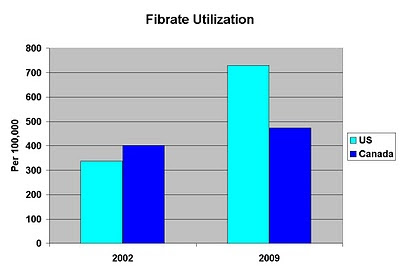Today’s Managing Health Care Costs Indicator is 14%
This month's American Journal of Managed Care has a review of a year of experience for a huge diverse population with high deductible health plans. The report is from Rand Corporation, and my Towers Watson colleague Roland McDevitt is a coauthor.
The researchers looked at change in health care costs for those who enrolled in HDHPs in 2005 – and compared this with change in health care costs of families who did not have the opportunity to enroll in HDHPs (as their employers did not offer these plans). The result: HDHPs were associated with a 14% lower cost than non-HDHPs. They evaluated different ranges of deductible, and found that $1000 deductibles changed cost substantially, while lower deductibles (or plans that had a large company payment to a health savings account that offset the deductible) did not have this impact. The impact was large enough that total cost increases were down overall in companies that offered HDHPs compared to those which did not offer such plans.
The unexpected and unsettling finding is that those on high deductible health plans, which offered cost-free preventive care without first meeting the deductible, received substantially less preventive care. They had fewer mammograms, colonoscopies and pap smears, and their children had fewer immunizations. It’s incongruous, but those on high deductible plans had more hemoglobin A1C tests (for diabetic control).
The study is huge – over 800,000 households, and 53 employers. They researchers didn’t compare families who accepted HDHPs with those that declined them, figuring that there would be substantial selection bias. The researchers also did propensity matching to adjust for potential confounding variables.
One potential reason for such large changes is that members switching to a high deductible health plan “stockpiled” health care in the months leading up to the transition. For instance, women might have made an appointment to get their mammogram and pap smear in December of 2004, just before switching plans. Elective procedures, such as knee arthroscopies or hernia repairs could also be “stockpiled.” However, the ‘baseline” (2004) costs for those who switched to HDHPs was no higher than the cost of controls.
It’s also likely that preventive care is suggested during office visits that are not preventive in nature, so that children who see their pediatrician are flagged to get any lagging immunizations, and those over 50 seeing their primary care physician are sometimes scheduled for colonoscopies, even if their reason for an office visit is a sore throat. The line between preventive and non-preventive care is also sometimes blurry. In our company, women discovered that the HDHP insurance plan held them financially responsible for the increased cost of digital mammography. A ‘preventive’ colonoscopy can become a ‘diagnostic’ colonoscopy when a biopsy is performed. This would lead to a patient believing that her procedure was covered fully, and discovering instead that she was responsible $1000 or more in “member cost share.”
It’s clear that greater patient cost exposure leads to less use of care. This can substantially lower cost of care. This research reminds us that patients subject to a high deductible forego both discretionary, low-value care, as well as recommended high-value care. Even offering the high-value care free of the deductible didn’t overcome this problem.
























